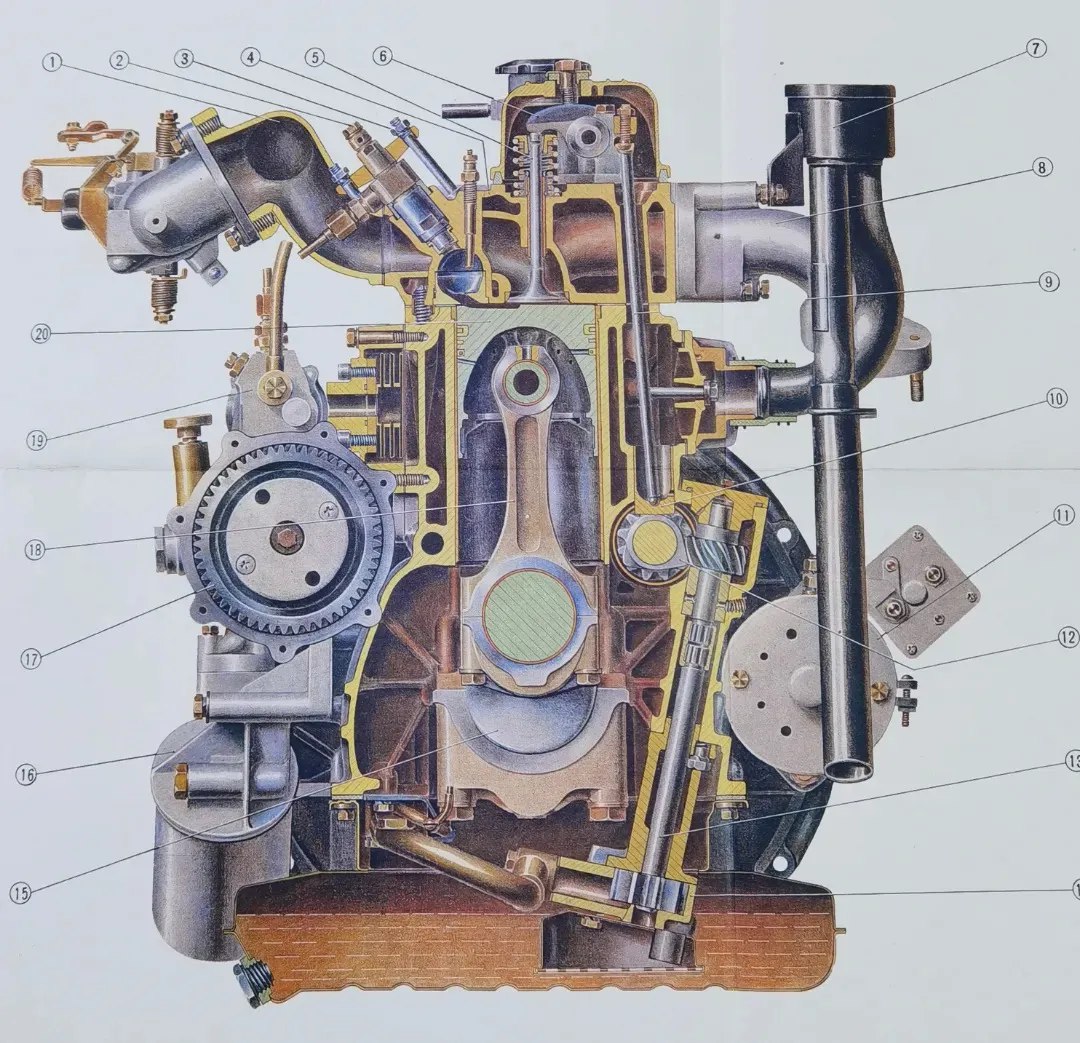




- BRNN
- BRI News
- BRNN News
- Database
Official Documents Polices and Regulations
Inter-government Documents International Cooperation BRI Countries
Business Guide Economic Data BRI Data
Trade
Investment Projects Latest projects
Cases - Content Pool

Photo shows a hand-drawn classroom wall chart on display at the exhibition hall of the School of Mechanical Engineering, Zhejiang University, in Hangzhou, capital of east China's Zhejiang Province. (Photo/Zhejiang University)
"This is a hand-drawn picture!" a student exclaimed in surprise in front of a cross-section diagram of an engine at the exhibition hall of the School of Mechanical Engineering, Zhejiang University, in Hangzhou, capital of east China's Zhejiang Province.
The student could hardly believe that the diagram, which so vividly and precisely depicts every detail of each engine part—astonishingly resembling a real engine—is actually a painting.
The artwork certainly doesn't resemble what most would consider a traditional painting. From the precise dimensions of each part to the accurate depiction of materials like steel, copper, aluminum alloy, and cast iron, the level of detail is astounding. The parts appear almost lifelike, with vivid colors and even a sense of motion.

Photo shows a lifelike colored cross-section diagram of an engine drawn by Shi Yueding. (Photo/Zhejiang University)
What's more incredible is that this extraordinary hand-drawn painting wasn't created by a professional artist or an art student, but by a retired teacher from Zhejiang University's School of Mechanical Engineering, 72-year-old Shi Yueding.
Driven by a passion for teaching, Shi began using hand-drawn diagrams in the 1980s to help his students fully grasp the inner workings of complex machine parts and components.
The remarkable engine cross-section diagram hanging in the abovementioned exhibition hall was created during this period.
"We couldn't just bring a car into the classroom or cut open an engine for students to see inside every time we explained complex structures like the internal combustion engine," Shi recalled.

Shi Yueding poses for a photo with his hand-drawn technical diagrams. (Photo/Zhejiang University)
Shi's innovative solution was to create detailed, three-dimensional (3D) illustrations of these complex structures, allowing students to "see" the inner mechanisms of machines.
For every part of the machine that students needed to understand, Shi would "unfold" it layer by layer in his drawings. The completed works were framed and displayed as classroom wall charts, which were widely shared among professors to aid their lessons.
While balancing his teaching and research responsibilities, Shi devoted his evenings to drawing. Each illustration was a meticulous project that blended engineering expertise with artistic skill. The process was time-consuming and labor-intensive: for example, the engine cross-section diagram took Shi three months to complete.
To create each piece, Shi would first analyze assembly diagrams and full component drawings, studying the working principles and structural relationships of each system. He would then draft a detailed axonometric view, adding depth through shading techniques and using colored pencils to accurately represent the materials' textures and finishes.
In the 1980s and 1990s, Shi spent countless hours drawing over 100 of these classroom wall charts. Many of his works even made their way into textbooks, where they served as illustrations that helped inspire and guide countless students.

Photo shows the orthographic views, stereograms, and colored drafts of mechanical parts drawn by Shi Yueding. (Photo/Zhejiang University)
Shi doesn't remember the exact number of illustrations he created for textbooks, but he is sure that it was more than 1,000.
His diagrams didn't just appear in textbooks and classrooms—they were more often drawn live on the blackboard during his lessons.
"Drawing on the blackboard while teaching really helped my students understand," Shi said. "When we use slides to explain technical diagrams, sometimes students lose track because the key parts only appear briefly. But when I draw it live, I can focus on the critical areas, and students follow along more easily."
Shi's teaching method was legendary among his students. One popular story among his former students illustrates his incredible attention to detail and ability to quickly identify errors.
When teaching students to draw orthographic views of objects, Shi would ask them to draw the orthographic views of a model in a single class period. After class, students would queue up to have their drawings checked.
"As soon as he saw our drawings, without even looking at the model, he could spot the mistakes instantly," one student recalled. "He'd detect them in just one second. It's amazing!"
Shi's artwork and teaching have attracted widespread attention on the internet, with many netizens commenting online that his hand-drawn diagrams are a perfect fusion of science and art.
In response to the high praise from his former students and netizens, Shi emphasized that quality education requires passion and dedication. "Good teaching demands effort and deep commitment. Teachers must have a sense of responsibility and mission. As educators, we should strive to be role models for our students."

Tel:86-10-65363107, 86-10-65368220, 86-10-65363106